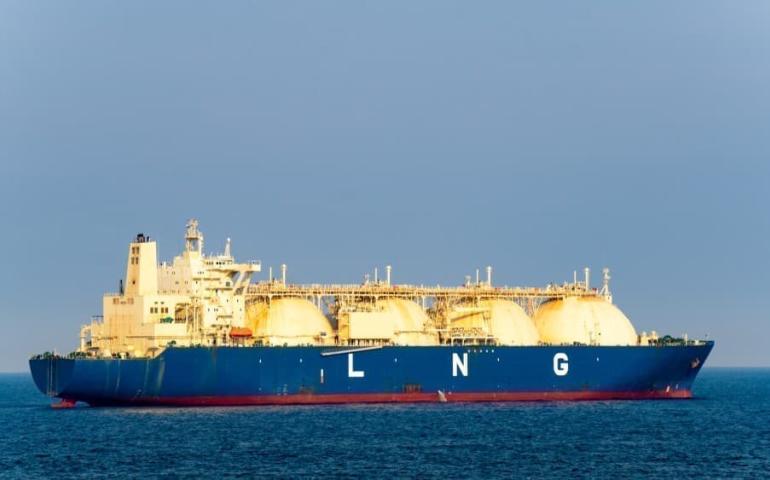DNB expects record demand for liquefied gas carriers in some years

Shipyards in South Korea and China are now completely booked building ships to transport liquefied natural gas (LNG).
So much so that, according to a new analysis from Climate Analytics, the market is heading towards an “cliff edge of overcapacity” that could leave shipping companies with stranded assets.
On the other hand, major Norwegian bank DNB expects demand for LNG transportation to remain high in the long term, although the large number of ships could create overcapacity and put pressure on rates in the coming years.
“We expect a daunting orderbook to dent freight markets in the coming years, before the next wave of LNG export projects returning the market to healthy levels,” the bank wriets in a report on the segment published in May.
”We believe LNG shipping demand growth will significantly outpace volume growth in our forecast period,” wrote DNB, expecting demand to grow at an average annual rate of 12.1% through 2027.
The analysis from Climate Analytics was initiated after the International Energy Agency (IEA) lowered its expectations for global fossil gas demand, which is now expected to peak by 2030.
“While the IEA sees no role for fossil gas in the global energy transition, the LNG shipbuilding industry appears to be heading in the opposite direction, which could be detrimental to everyone involved in the industry,” the report’s lead author, energy analyst Thomas Houlie of Climate Analytics, wrote this week:
“There is no need for new LNG carriers in any scenario.”
Projects highest demand in 13 years
However, DNB wrote in its outlook for the market for the transportation of liquefied natural gas by sea that fleet utilisation will first fall from 72% last year to around 69% in 2024, before starting to rise again to 78% in 2027, which the bank estimates will be the highest level in 13 years.
This is mainly because the bank expects to see more LNG export projects coming online in the next three years and a change in trading patterns.
This change will mean ships will have to carry the liquefied natural gas for longer, which will reduce available capacity.
“We expect North America to account for more than 60% of volume growth during our forecast period. After a few years where Europe has increased its reliance on LNG and reduced the average shipping distance, we see Asia accounting for higher US export volumes, helping to lift the global average shipping distance by 18%,” DNB wrote in May.
Drewry’s head of maritime research, Navin Kumar, also expects the fleet of LNG carriers to grow too much in the short term. However, his predictions are somewhat less pessimistic and more in line with DNB’s.
“I think we may see an overcapacity of 8-10%, which is normal and manageable. But I don’t think demand for LNG will grow negatively,” he explained to ShippingWatch on Monday.
LNG is an important part of Europe’s energy security in particular, and at the same time, liquefied natural gas is seen as an important alternative fuel in shipping’s green transition, with shipping companies such as CMA CGM, Hapag-Lloyd and most recently Maersk using it as a way to move away from sailing exclusively on traditional heavy oil.
However, LNG is still a fossil fuel whose production chain accounts for significant greenhouse gas emissions, and actors such as the World Bank have warned against switching to the fuel.










